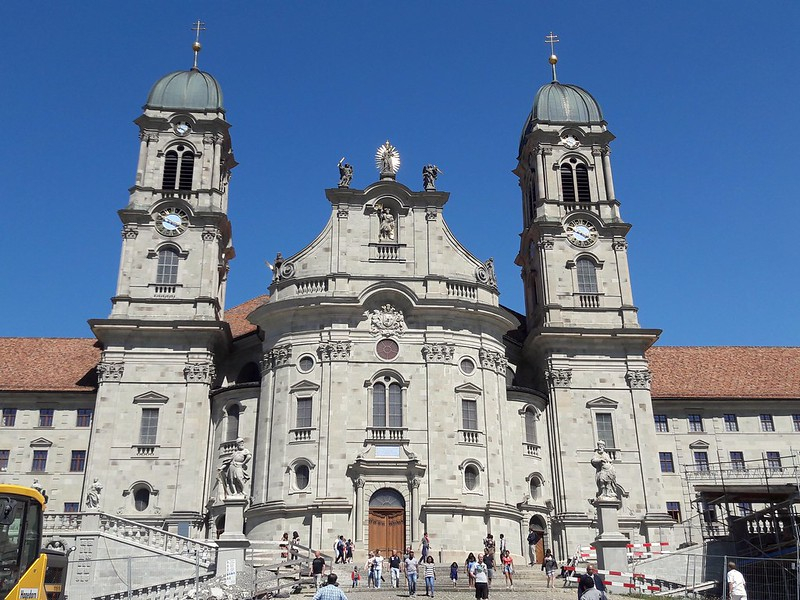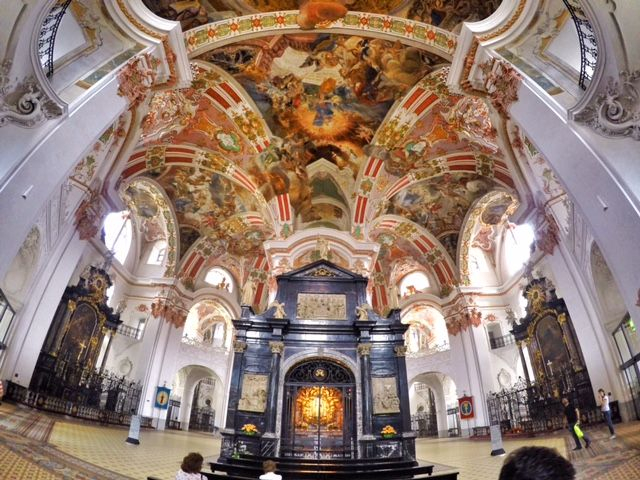Einsiedeln Abbey
Einsiedeln Abbey is a picturesque Baroque style Benedictine monastery with an illustrious history dating to the 9th century AD. Founded in 835 AD by a monk called Meinrad, Einsiedeln Abbey flourished into a cultural hub and a popular pilgrimage site. Its chapel is even said to have been consecrated by Christ himself in 948 AD. Today, Einsiedeln Abbey is home to an important statue known as the Black Madonna as well as a winery and a theological school.
The monk Meinrad was educated at the abbey school of Reichenau, where he became a monk and ordained priest. Meinrad moved to Mount Etzel, but died on January 21 861 AD when he was killed by some robbers thinking the hermit had valuable treasures. From that point onwards, the location was always inhabited by a hermit emulating Meinrad. One such hermit, Eberhard, founded a monastery there in 934 and became its first abbot.
Allegedly, the monastery was consecrated miraculously by Jesus Christ himself in 948 – an event investigated and claimed by then pope, Leo VIII. The third abbot was made prince of the Holy Roman Empire by Emperor Otto I and in 1274 the abbey was made an independent principality by Rudolf I of Germany. The abbey itself was reconstructed several times after numerous fires – entirely redone in the Vorarlberg Baroque style between 1719 and 1735. The main facade is flanked by 2 ornate towers and the interior reflects the exterior grandeur, covered in frescoes and stuccos.
Einsiedeln Abbey still stands in its magnificence at the intersection of the main road beside a large town square. Open all day, be sure to visit the Chapel of Grace, designed in the Neo-classical style which contains the venerated Black Madonna statue and the reliquary of Saint Meinrad. The abbey still functions as such, with 55 monks teaching around 350 students as well as serving local parishes. While at Einsiedeln Abbey, you should sample some of the wine made on-site and visit the small gift shop.












